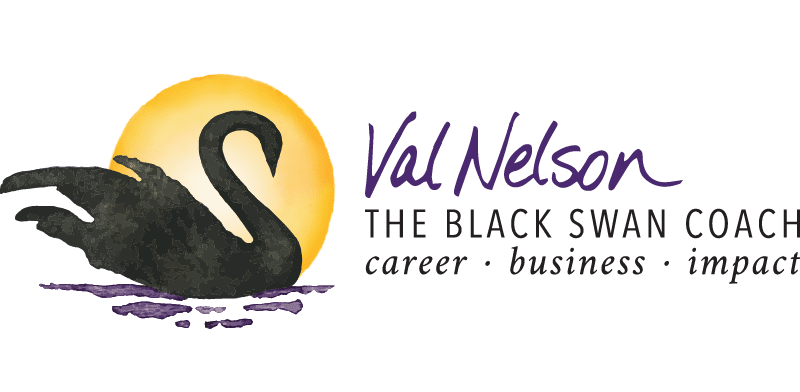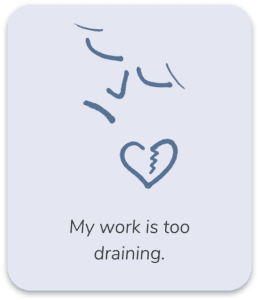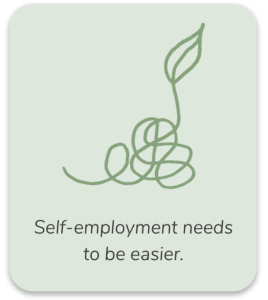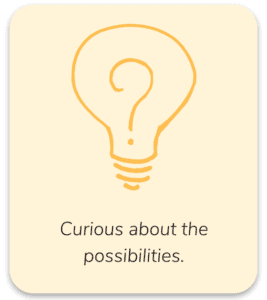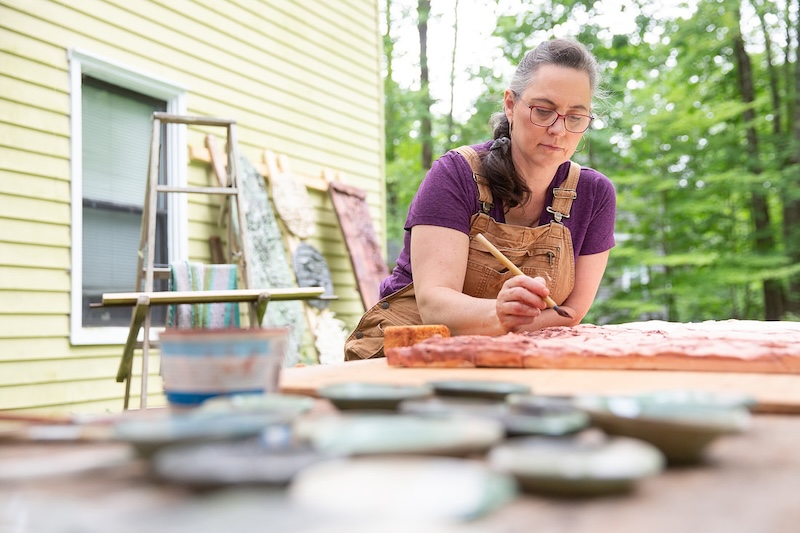 Sensitive souls with creative passions often ask this question: “Can I make a living as an artist… without burning out or selling out?” That deserves a thoughtful answer.
Sensitive souls with creative passions often ask this question: “Can I make a living as an artist… without burning out or selling out?” That deserves a thoughtful answer.
I recently sat down with a self-supporting artist and coach for artists, Val Gilman, to talk about the myths and realities of making a living as an artist, especially for those of us with big hearts, such as highly sensitive people (HSPs).
Sensitive souls need meaning, authenticity, and calm in our work, in addition to income. So let’s have a closer look at how it could all come together for you.
In this post, you can watch our conversation, read some highlights, get 7 key takeaways, and get some ideas for your own income as an artist.
Conversation Topics and Highlights
I captured some highlights from our conversation, with video timestamps and key quotes, below.
0:00 – Initial Expectations about Art as a Livelihood
First we framed the big question: Can I really make a living as an artist—especially as a sensitive soul who doesn’t want to burn out or sell out?
Val G’s comments on her early expectations:
- “For me, success as an artist [originally] meant making a living selling work, that all of my income would come from selling art. It was a really narrow definition.”
- She shared that this pressure to sell art as the only income source created a tension between making good art and making art that sells.
3:40 – Sensitive Souls and Overwhelm
- I commented that “For people who are sensitive souls — and for me that includes introverts, anyone with a big heart, someone who’s highly sensitive — a lot of them are really creative spirits too. But the idea of overwhelm is a challenge area for us. I’ve had to learn how to organize my life around my energy needs so that it doesn’t have to be [a challenge].”
- Val G said, “It’s one of the big things I help people with — how to get the energy and the support in place that we need in our lives.”
4:15 – Redefining Success for Oneself
How Val G. shifted from external definitions of success to living in alignment with personal values and integrity.
- “My sense of success is much more connected to what’s important to me, rather than some outside idea about what success is.”
6:55 – The Patchwork Quilt of Income
Embracing a “quilt” or patchwork approach is a common way to find your sustainable livelihood. Val G’s experience:
- “Making a living is more about making a life than it is about just making a living. I do that in a variety of ways: teaching, coaching, selling art. Each piece satisfies different parts of who I am.”
8:45 – The Role of Money and Structure to Find Freedom
She describes how budgeting helped her create a sense of financial safety. Likewise, forming some practical structures (over time) helped her create freedom instead of limiting it.
- “Having a budget that works is a structure that supports me. It helps me feel safe.”
- “There are structures that make it possible to have freedom. If you have no structure, it’s chaos and it’s overwhelming.”
12:08 – Money as Self-Love
We talked about how dealing with money can be something that’s actually done in loving ways—reframing finances as self-care and necessary support for creative work. It can be freeing once you sit down with it.
- “Taking care of the money doesn’t mean you’re selling out. It’s actually self-loving.”
12:50 – Art, Money, and Integrity (Selling without “Selling Out”)
Finding the middle ground between selling out and honoring creative integrity. Seeing art as connection. It’s about someone’s own connection to your art, not a judgment about you.
- “Integrity is number one. If you’re trying to sell your work in a way that isn’t connected to your integrity, it’s a quick way to burn out.”
- “The key is that the money piece is not the primary piece. The primary piece is the connection. When someone connects with your work, they’re connecting their heart to the work.”
- Cultivation of your audience can take a lot of time and perseverance, so you need other funds to support you in the meantime.
14:50 – The Right Audience Finds You
Why authentic, heartfelt work is the art that resonates and sells.
- “Making work that is honest and is where your heart is — that’s the stuff that the right person is going to see and want. And knowing that your audience is not everybody.”
- “There are people who want what you have to offer. They’re out there.”
15:50 – A Patchwork Quilt of Income, in Practice
A closer look at the “four-part quilt” of art, teaching, coaching, and the business side. And how they feed each other. We also touched on examples from other artists.
- She described it as a “quilt” or even a “four-part braid” where each part of her work (art, coaching, teaching, business tasks) balances and strengthens the others.
- “For me, I love teaching and I love coaching and I’m so grateful that I get to do both of these things. And there’s also the business end of things… So it’s kind of a four-part quilt.”
19:21 – Spaciousness and Patience
The importance of pacing yourself, doing one thing at a time.
- “I was feeling so overwhelmed with all of these different pieces and…. So now part of having the quilt for me is registering that it cannot happen all at once even though my creative brain wants it to.”
- “Allowing one major focus at a time.”
20:28 – Learning to Let in Support Has Been Critical
We both shared about the challenge and then the joy of letting in support.
- “Doing it alone is a myth of the starving artist. That’s part of the burnout recipe. We have a web of connection and we need to live into that.”
- “Getting help is really important. And help can actually feel good and playful, not heavy.”
7 Key Takeaways for Making a Living as an Artist
- Family or societal prescriptions about success can limit your possibilities for creating a life you actually want. Instead, get clear on your own definition of success.
- Success doesn’t have to mean compromising your values. For sensitive souls especially, integrity is a non-negotiable. We burn out without the integrity piece.
- You can organize your life and work around your energy needs as a sensitive soul. Self-care first.
- A creative livelihood can be a patchwork of income streams by design — and that’s a strength, not a weakness.
- Structure (like planning around time and budget) can create the safety needed for creativity to flourish.
- Selling art can feel natural and nourishing when it’s about connection rather than ego or performance.
- Support is not a weakness — it’s essential. Guidance from someone who’s been there is gold.
Income Ideas for Sensitive Creatives
This short list is just to get the creative juices flowing on ideas for a patchwork quilt of income. These build on your enjoyment of creativity and making.
- Web design
- Sustainable landscape design or urban/regional planning
- Business photography or videography
- Data visualization
- Communications or fundraising for mission-driven organization
- Events management
- Carpentry and home renovations
- Digital content creator and strategist
- Art teaching
- Group crafting facilitator (such as for team building, community connections, fun)
- Retreat or workshop facilitator
- House painting
To explore more career ideas:
- Candid Career > Art Career Video Stories and Resources
- Best Careers for Introverts and HSPs
- Careers for Writers
Wrapping Up
This conversation with Val Gilman reminded me that making a living as an artist isn’t about one-size-fits-all. It’s about creating a quilt of work and life that truly fits you. Sensitive creative souls, who care so much about authenticity and doing work that matters, don’t have to burn out or sell out in order to thrive.
With integrity, support, and some practical structures in place, and lots of perseverance, artists are making it work. If this conversation spoke to you, I encourage you to check out Val Gilman’s coaching for artists at Taproot Arts and Insight.
Know that support is available. You don’t have to do it alone. In fact, the lone wolf method isn’t fun and tends to lead to burnout.
